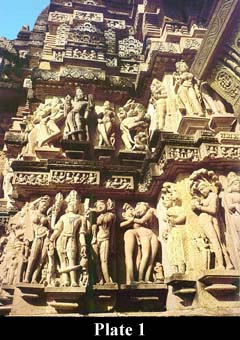 |
|
| ISSN 1084-7553 | |
| IJTS Vol. 2, No. 2 November 1996 |
|
| Editorial Note | |
| Setting the Stage | |
| The Artha of... | |
| Computer Space | |
| New Titles | |
| - Studi Orientali... | |
| - Autumn Leaves... | |
| - ChaNDI PATh... | |
| Support The IJTS |
|
|
|
|
| Search |
|
| Register |
|
| Create Your Profile | |
| Recover Password | |
| Log In |
|
| Institutional Sub |
|
| none | |
| by Michael Rabe |
|
Setting the stage.
Returning to consideration of the site in the year 1000 Vikrama, it must have seemed a most propitious time for a hitherto insignificant tributary of the Imperial PratihAras to concretize dynastic aspirations for genuine sovereignty by the erection of a magnificent temple. As Ron Inden has noted in his brilliant reconstruction of the Deccan-based imperial formation of the Rashtrakutas,19 the grand finale of a tributary king's metamorphosis to overlordship in this period, equivalent to the cakravartin's horse sacrifice of earlier times, was often the construction of major temple. Unfortunately, the Candella's earliest royal temple dedication is lost--all but a roughly 1'4" square fragment of what must have been an approximately 2' x 5' slab.20 Because the fragment was found near the VAmana, that temple may have been the one dedicated therein by the Candella king HarSadeva,21 presumably after wresting the fabled Kalanjar fortress22 back from the Rashtrakuta invader, Indra III and restoring his feudal liege MahIpAla to the PratihAra throne in Kanauj. However, since, atypically, its only overtly sexual imagery appears in unpublished subsidiary niches of the roof-pediments, 23 it can receive no further comment here. [This is a preview of the full page; if you are a member of the Asiatica Association and have access to the IJTS, please login using the box on the left menu; non members: please become a member to support the Asiatica Association, and get full access to our publications.] |
|
©1995-2006 Asiatica Association. All Rights Reserved
site development L. Magnocavallo / site comments E. Garzilli |
 For one glorious century starting just before the year 1000 Vikrama (A.D. 943),
the political center of North India's Imperial formation
For one glorious century starting just before the year 1000 Vikrama (A.D. 943),
the political center of North India's Imperial formation